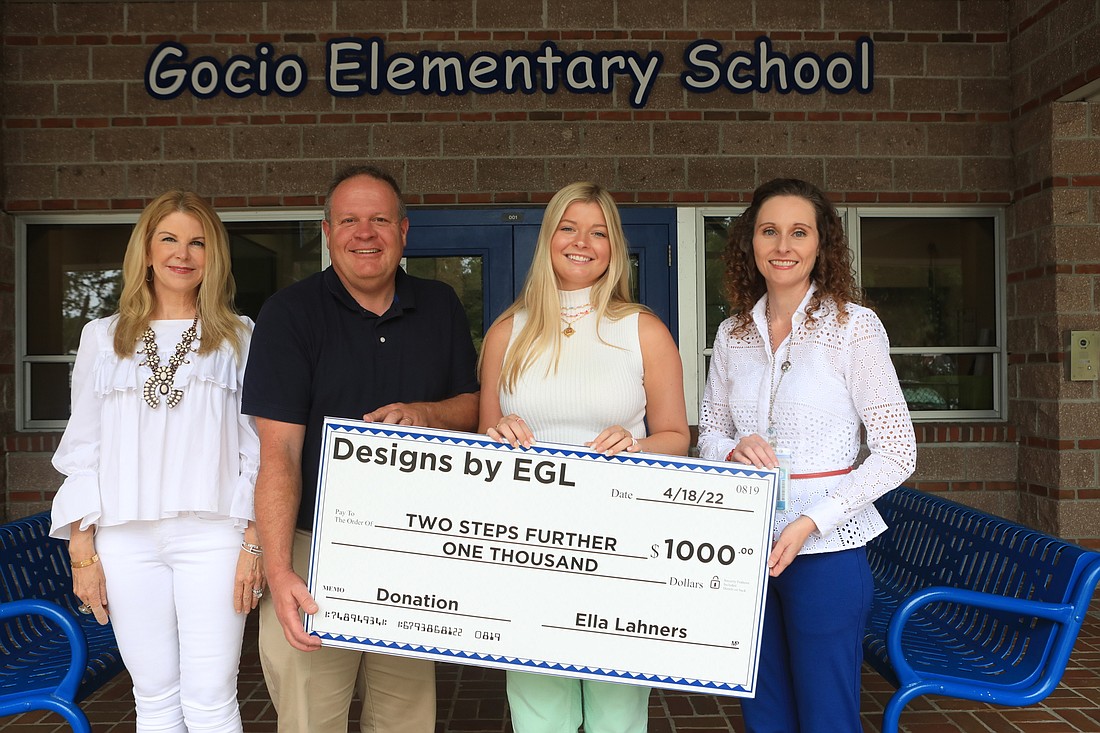- March 29, 2025
-
-
Loading

Loading

With the help of the Step 2 Furthers nonprofit, Gocio Elementary School has helped its students save for the future with its Step Up for College program, raising $250 a year per child through online schoolwork.
The money is provided by nonprofit founders Cathleen and John Studdiford, who started the program with their children, Mairead, Maeve and Owen.
Sometimes, though, they get some help. Businesswoman Ella Lahners donated $1,000 to the school’s program on April 18, presenting a check to principal Steven Royce at the school.
The Step Up for College program tests children on math and English and rewards them with up to $50 a month — capped at $250 a year — deposited into a personalized savings account for doing extra work in the iReady online learning program. Around 250 students are involved with the program.
“The vision for the project came down to ‘How do we create resources so kids can access college?’” Royce said. “It’s showing them that college is a reality for everyone. Sometimes having resources is that boundary.”
“They can enroll in second grade and it goes up to fifth grade, so by the time they leave fifth grade they can have $1,000 towards college,” said data facilitator Kelley Bakan.
Lahners, who is friends with Studdiford’s daughter Maeve at The Out-of-Door Academy, became involved with the program after hearing about the impact it had at Gocio.
She’s had a good amount of success selling jewelry she creates online in the past year and a half. Her jewelry specializes in summer designs.
“Most of the jewelry (is made) with string, needles and a lot of patience,” Lahners said. “The necklaces are made with wire, and that takes more time.”
She’s made around $10,000 in sales so far and said she had planned to donate 10% to the program.
After delivering the check, Lahners also followed up with another gift — jewelry from her store for the top students in the school’s program.
Studdiford hopes the Step Up For College program has a promising future. Much of the funds supplied so far have come from Cathleen and her husband, but with four years of data of how the program has helped students now at her disposal, she hopes the nonprofit will be able to secure more grant money in the future.